A city among the clouds sounds like something out of Star Wars, but a NASA Concept called HAVOC or High Altitude Venus Operational Concept proposes just that. Well, not exactly like Cloud City in Empire Strikes Back, but a giant airship floating among the clouds of Venus. Yes, you read that right.
(Video Credit: NASA)
So what do we know about Venus? Well, some scientists like NASA’s Director of Planetary Science theorize that Venus could have been more like Earth a few billion years ago. Today, the planet’s surface is crushing with pressure with temperatures up to 900 degrees Fahrenheit which has been caused by a runaway greenhouse effect that exposed the planet to Sun.
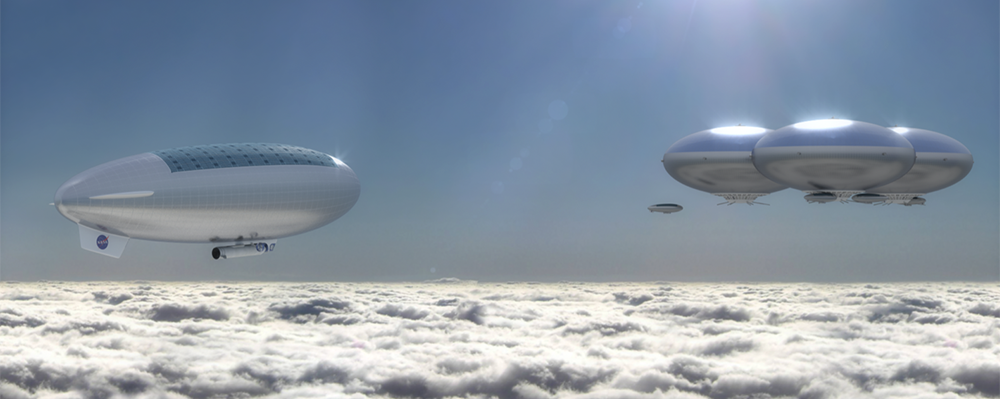 (Image Credit: NASA)
(Image Credit: NASA)
“The atmosphere of Venus is primarily carbon dioxide with thick clouds of sulfuric acid that completely cover the entire planet. The atmosphere traps the small amount of energy from the sun that reaches the surface along with the heat the planet itself releases,” says NASA. “This greenhouse effect has made the surface and lower atmosphere of Venus one of the hottest places in the solar system.”
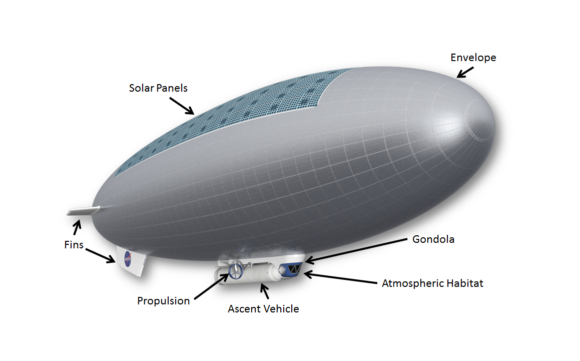
(Image Credit: NASA)
If Venus had oceans, they were evaporated away and the temperature and tumultuous conditions on the planet’s surface make any kind of crewed mission virtually impossible.
But some researchers think there’s still a case for a human mission to Venus, something not really contemplated by NASA in the past or even by Hollywood, both clearly favoring Mars––where it’s a little bit cooler. Venus, however, does have Earth-like gravity, atmospheric conditions that actually shield from interstellar radiation, and it’s closer than Mars.
“The upper atmosphere of Venus, with similar pressure, density, gravity, and radiation protection to that of the surface of the earth, is relatively benign at 50 km. A lighter-than-air vehicle could carry either a host of instruments and probes or a habitat and ascent vehicle for a crew of two astronauts to explore Venus for up to a month,” claims NASA HAVOC project. “Such a mission would require less time to complete than a crewed Mars mission.”
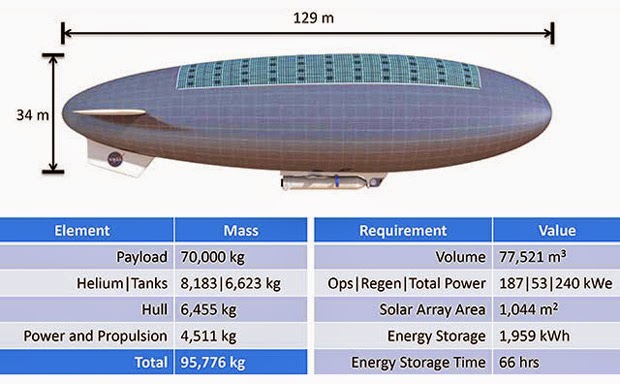 (Image Credit: NASA)
(Image Credit: NASA)
The NASA HAVOC project is being led by engineers at NASA’s Langley Research Center in Hampton, Virginia. The team is conceptualizing a massive airship that resembles a blimp that would carry a small crew to float among the clouds of Venus for about a month. This could lead to an aerial colony.
“Venus is an important destination for future space exploration endeavors. However, it presents a unique set of challenges,” says NASA. “Though its internal geology is similar to Earth’s, its surface is hot enough to melt lead and is covered with craters, volcanoes, mountains, and lava plains.”
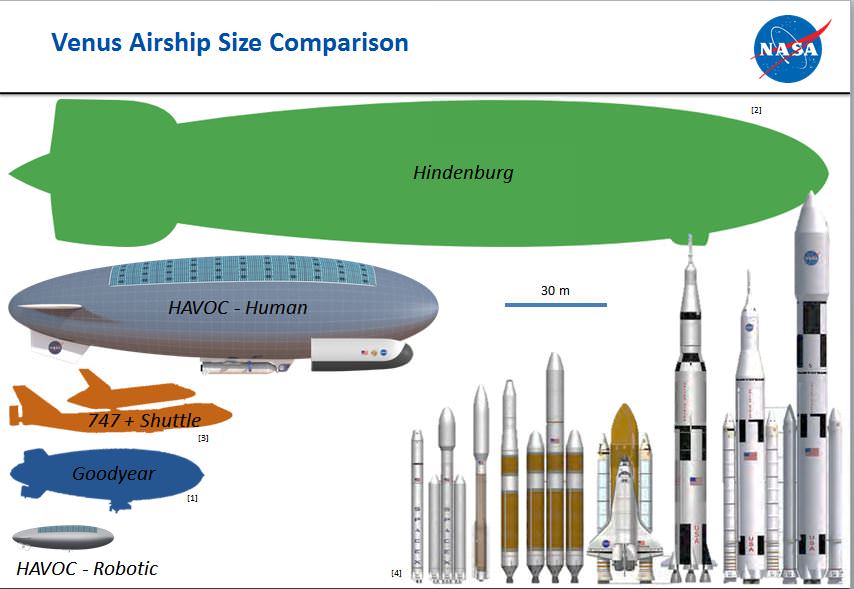 (Image Credit: NASA)
(Image Credit: NASA)
“Key technical challenges for the mission include performing the aerocapture maneuvers at Venus and Earth, inserting and inflating the airship at Venus, and protecting the solar panels and structure from the sulfuric acid in the atmosphere,” says the HAVOC team. “With advances in technology and further refinement of the concept, missions to the Venusian atmosphere can expand humanity’s future in space.
(Header Image Credit: Disney)

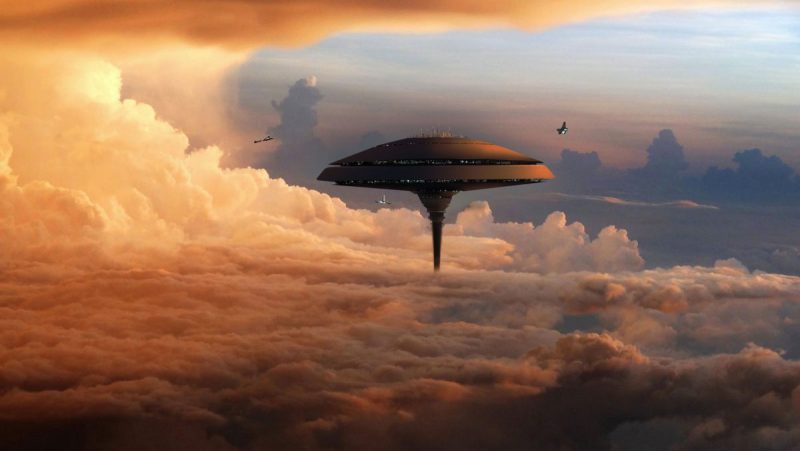
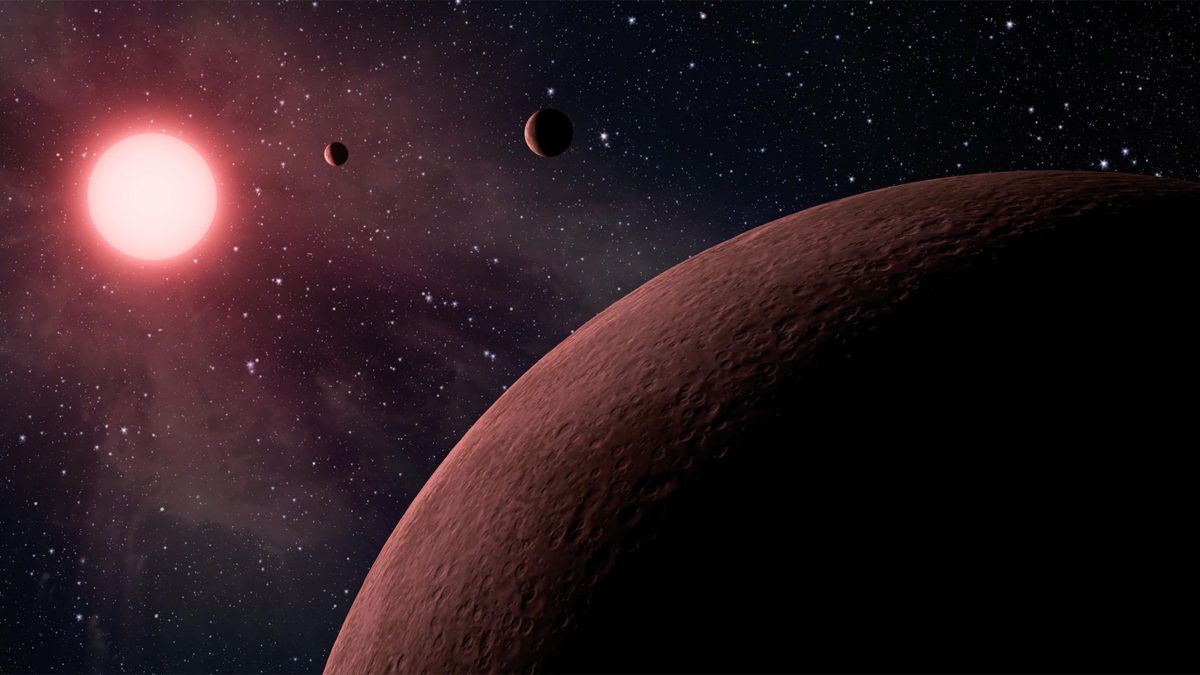
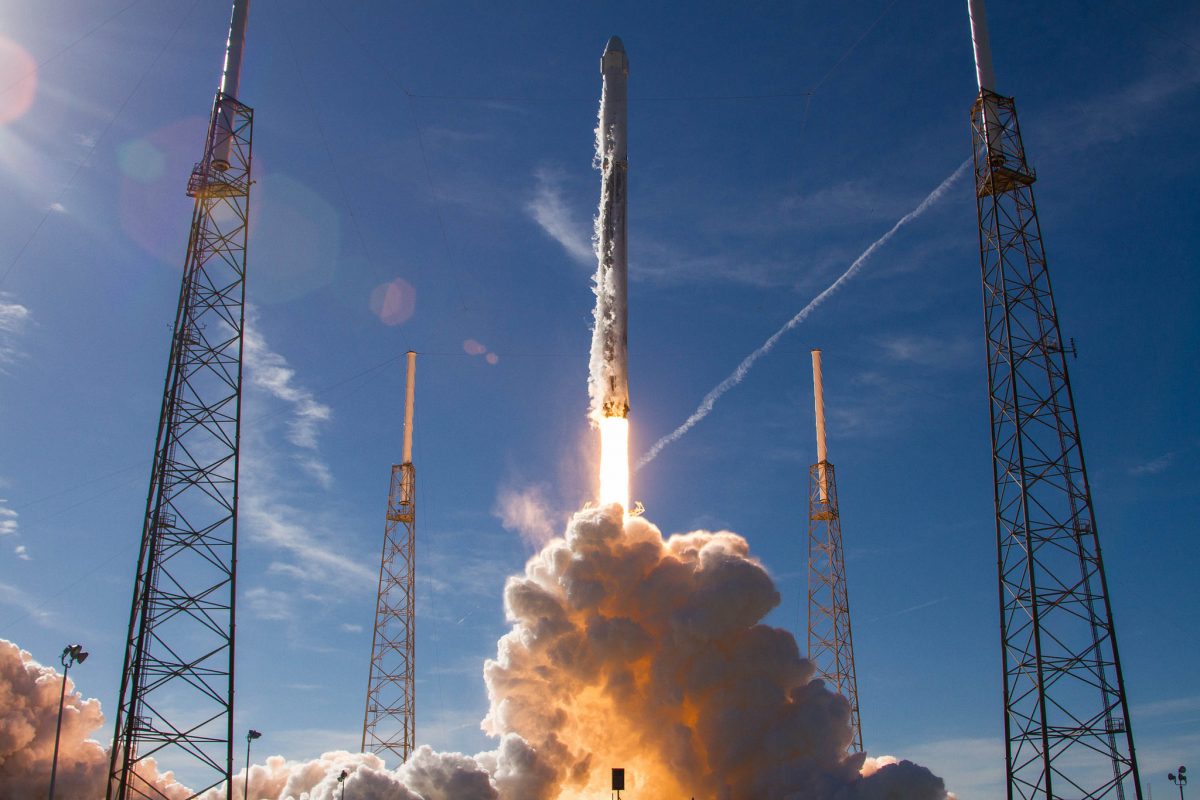






Nice idea, Richard Brandon in the UK would like this notion I think with his enjoyment of balloon flight and space interests 🙂
http://www.wisecorp.co.uk